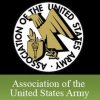This slideshow requires JavaScript.
YELLOW RIBBON AMERICA NEWS DESK:
President Presents Medal of Honor to Fallen U. S. Air Force Hero’s Widow
By Secretary of the U. S. Air Force Public Affairs
WASHINGTON, Aug. 23, 2018 — On what would have been their 26th wedding anniversary, Valerie Nessel, the widow of fallen Air Force Tech. Sgt. John A. Chapman, accepted his Medal of Honor from President Donald J. Trump during a ceremony at the White House yesterday.
“We are gathered together this afternoon to pay tribute to a fallen warrior, a great warrior … and to award him with our nation’s highest and most-revered military honor,” Trump said.
Fighting in the early morning hours through brisk air and deep snow, Chapman sacrificed his own life to preserve the lives of his teammates during the Battle of Takur Ghar in Afghanistan on March 4, 2002.
“[John] would want to recognize the other men who lost their lives,” Valerie said in a previous interview. “Even though he did something he was awarded the Medal of Honor for, he would not want the other guys to be forgotten — they were part of the team together. I think he would say his Medal of Honor was not just for him, but for all of the guys who were lost.”
Chapman was originally awarded the Air Force Cross for his actions; however, following a review of the Air Force Cross and Silver Star recipients directed by then-Secretary of Defense Ash Carter, Deborah James, then-Secretary of the Air Force, recommended Chapman’s Air Force Cross be upgraded to the Medal of Honor.
‘John Was Always Selfless’
“John was always selfless — it didn’t just emerge at Takur Ghar — he had always been selfless and highly competent, and thank God for all those qualities,” retired Air Force Col. Ken Rodriguez, Chapman’s commander at the time of the battle, said in a previous interview. “He could have hunkered down in the bunker and waited for the [Quick Reaction Force] and [Combat Search and Rescue] team to come in, but he assessed the situation and selflessly gave his life for them.”
Chapman enlisted in the Air Force on Sept. 27, 1985, as an information systems operator, but felt called to be part of Air Force special operations. In 1989, he cross-trained to become an Air Force combat controller.
According to friends and family, Chapman had a tendency to make the difficult look effortless and consistently sought new challenges. Dating back to his high school days, he made the varsity soccer squad as a freshman. In his high school yearbook, Chapman quoted these words: “Give of yourself before taking of someone else.”
Chapman looked for a new challenge, which he found in combat control. This special operations training is more than two years long and among the most rigorous in the U.S. military; only about one in 10 airmen who start the program graduate. From months of intense training to multiple joint schools — including military SCUBA, Army static-line and freefall, air traffic control, and combat control schools — Chapman is remembered as someone who could overcome any adversity.
“One remembers two types of students — the sharp ones and the really dull ones — and Chapman was in the sharp category,” said Ron Childress, a former Combat Control School instructor. “During one of his first days at Combat Control School, I noticed a slight smirk on his face, like [the training] was too simple for him … and it was.”
Following Combat Control School, Chapman served with the 1721st Combat Control Squadron at Pope Air Force Base, North Carolina, where he met Valerie in 1992. They had two daughters, who were the center of Chapman’s world even when he was away from home, which was common in special operations.
“He would come home from a long trip and immediately have on his father hat — feeding, bathing, reading and getting his girls ready for bed,” said Air Force Chief Master Sgt. Michael West, who served with Chapman through Combat Control School, a three-year tour in Okinawa, Japan, and at Pope AFB. “They were his life and he was proud of them. To the Air Force he was a great hero … what I saw was a great father.”
The Battle of Takur Ghar
In conjunction with Operation Anaconda in March 2002, small reconnaissance teams were tasked to establish observation posts in strategic locations in Afghanistan, and when able, direct U.S. airpower to destroy enemy targets. The mountain of Takur Ghar was an ideal spot for such an observation post, with excellent visibility to key locations.
For Chapman and his joint special operations teammates, the mission was to establish a reconnaissance position on Takur Ghar and report al-Qaida movements in the Sahi-Kowt area.
“This was a very high-profile, no-fail job. And, we picked John,” said retired Air Force Col. Ken Rodriguez, Chapman’s commander at the time. “In a very high-caliber career field, with the highest quality of men — even then — John stood out as our guy.”
During the initial insertion onto Afghanistan’s Takur Ghar mountaintop on March 4, the MH-47 Chinook helicopter carrying Chapman and the joint special operations reconnaissance team was ambushed. A rocket-propelled grenade struck the helicopter and bullets ripped through the fuselage. The blast ripped through the left side of the Chinook, throwing Navy Petty Officer 1st Class Neil Roberts off the ramp of the helicopter onto the enemy-infested mountaintop below.
The severely damaged aircraft was unable to return for Roberts, and performed a controlled crash landing a few miles from the mountaintop. Thus began the chain of events that led to unparalleled acts of valor by numerous joint special operations forces, the deaths of seven U.S. servicemen and now, 16 years later, the posthumous award of the Medal of Honor to Chapman.
Alone, against the elements and separated from his team with enemy personnel closing in, Roberts was in desperate need of support. The remaining joint special operations team members, fully aware of his precarious situation, immediately began planning a daring rescue attempt that included returning to the top of Takur Ghar where they had just taken heavy enemy fire.
As the team returned to Roberts’ last-known position, now on a second MH-47, the entrenched enemy forces immediately engaged the approaching helicopter with heavy fire.
The helicopter, although heavily damaged, was able to successfully offload the remaining special operations team members and return to base. Chapman, upon exiting the helicopter, immediately charged uphill through the snow toward enemy positions while under heavy fire from three directions.
Courageous Actions
Once on the ground, the team assessed the situation and moved quickly to the high ground. The most prominent cover and concealment on the hilltop were a large rock and tree. As they approached the tree, Chapman received fire from two enemy personnel in a fortified position. He returned fire, charged the enemy position and took out the enemy combatants within.
Almost immediately, the team encountered machine-gun fire from another fortified enemy position about 40 feet away. Chapman deliberately moved into the open to engage the new enemy position. As he engaged the enemy, he was struck by a burst of gunfire and became critically injured.
Chapman regained his faculties and continued to fight despite his severe wounds. He sustained a violent engagement with multiple enemy fighters for over an hour before paying the ultimate sacrifice. Due to his remarkably heroic actions, Chapman is credited with saving the lives of his teammates.
Picture: Valerie Nessel, the spouse of Tech. Sgt. John Chapman, holds up the Medal of Honor after receiving it from President Donald J. Trump during a ceremony at the White House in Washington, D.C., Aug. 22, 2018. Chapman was posthumously awarded the Medal of Honor for actions on Takur Ghar mountain in Afghanistan on March 4, 2002. His elite special operations team was ambushed by the enemy and came under heavy fire from multiple directions. Chapman immediately charged an enemy bunker through thigh-deep snow and killed all enemy occupants. Courageously moving from cover to assault a second machine gun bunker, he was injured by enemy fire. Despite severe wounds, he fought relentlessly, sustaining a violent engagement with multiple enemy personnel before making the ultimate sacrifice. With his last actions, he saved the lives of his teammates. U.S. Air Force photo by Staff Sgt. Rusty Frank

























